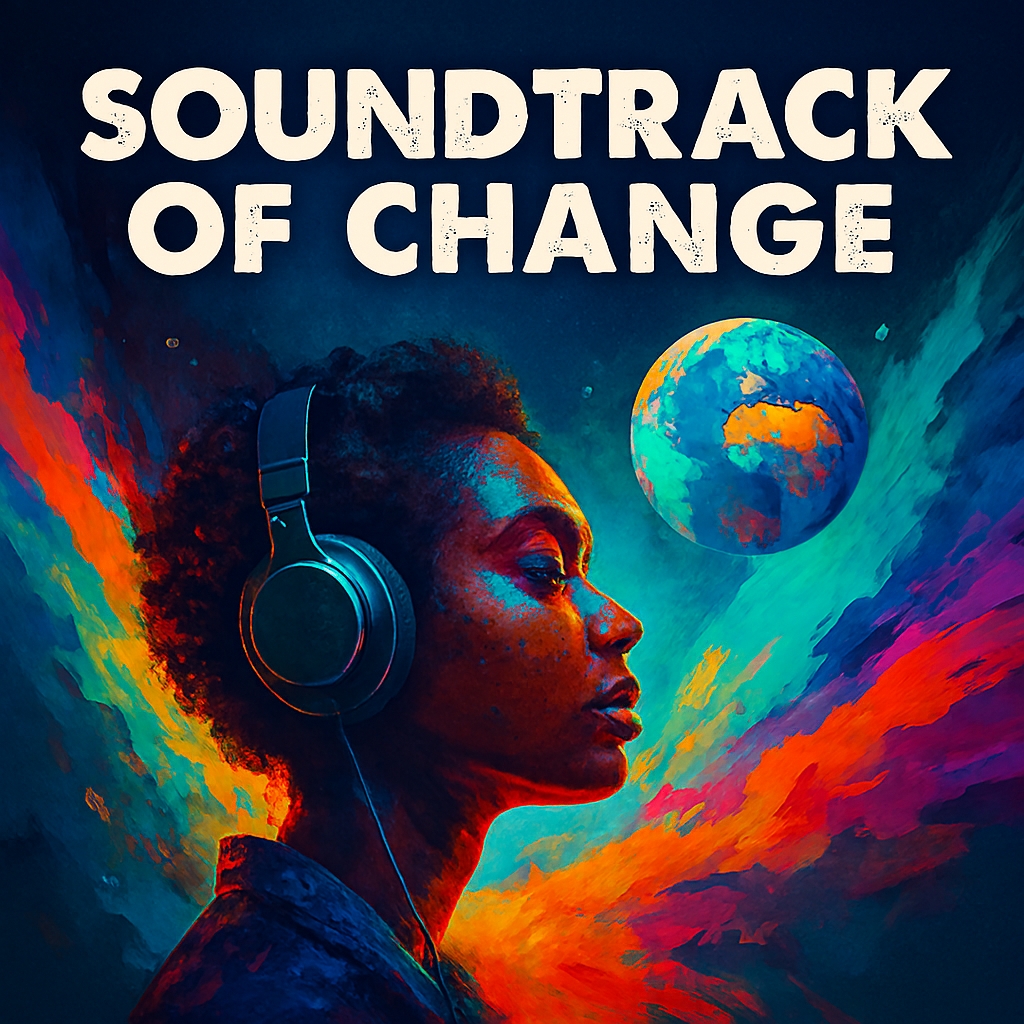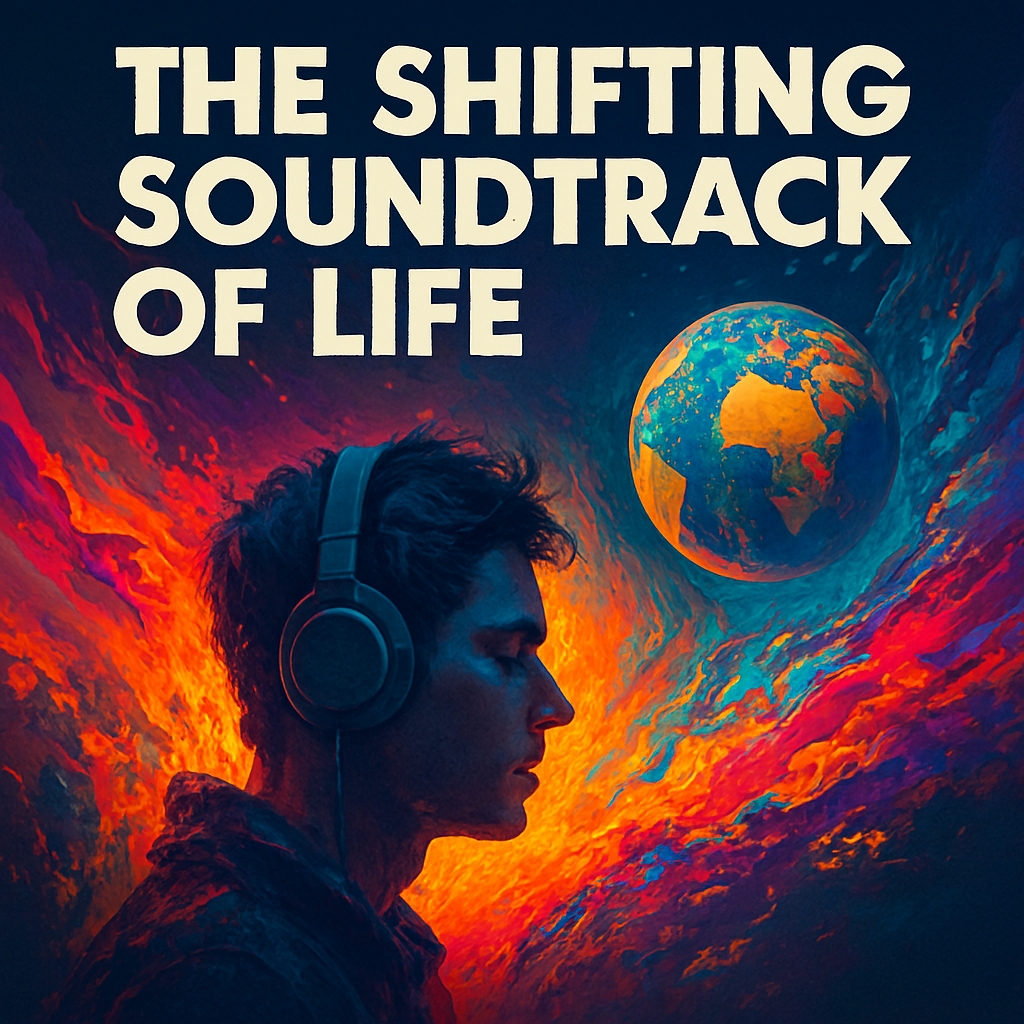The Soundtrack Of Life – How Music Evolves With Us
Why Our Preferences Are Never Static
MUSIC AS A MIRROR OF HUMAN CHANGE
The Soundtrack of Life’s Music evolves because we do. It reflects our emotional states, cognitive growth, social environments, and cultural exposure. From tribal chants to digital synths, the genres we embrace shift with our identities and tools. These changes are not random – they are deeply rooted in how we process emotion, memory, and belonging.
Childhood melodies often become emotional anchors – while adolescence introduces rebellion and exploration. As we age, our musical preferences diversify – reflecting broader emotional palettes and life experiences. Music is shaped by the tools we use to access it – from vinyl to streaming algorithms. The beats we dance to are psychological timestamps.
EMOTIONAL MEMORY AND MUSICAL ANCHORING
Music is one of the most powerful emotional anchors in human experience. Songs linked to key life events often become permanent fixtures in memory – regardless of genre. This process is called emotional encoding – where music becomes tied to specific emotional states.
A breakup song heard during a painful moment may evoke sadness years later. A celebratory anthem from a graduation may trigger joy decades on. These emotional associations influence future preferences – often subconsciously. People seek music that matches or modulates their current emotional state.
This is known as mood congruence – and it explains why we gravitate toward certain genres during stress or happiness. Emotional memory also explains why older adults often prefer music from their youth. It’s not nostalgia alone – it’s emotional anchoring.
The brain’s limbic system – which governs emotion – is highly responsive to musical stimuli. Dopamine release during music listening reinforces emotional bonds. These bonds shape genre loyalty – even as new styles emerge. Emotional anchoring is not static – it evolves with life stages. As emotional needs shift – so do musical preferences.
EMOTIONAL STATES AND GENRE PREFERENCES
| Emotional State | Common Genre Preference | Psychological Function | Example Track Type |
|---|---|---|---|
| Sadness | Acoustic – Ballads | Emotional validation | Slow tempo – minor key |
| Joy | Pop – Dance | Mood amplification | Upbeat – major key |
| Anxiety | Ambient – Classical | Stress reduction | Low tempo – soft dynamics |
| Motivation | Hip-Hop – Rock | Energy boost | High tempo – strong rhythm |
Human Change And Emotional Memory
COGNITIVE DEVELOPMENT AND MUSICAL COMPLEXITY
As cognitive abilities mature – musical preferences often shift toward more complex structures. Children prefer simple melodies with repetitive patterns – due to limited auditory processing. As the brain develops – it becomes capable of appreciating layered harmonies, syncopation, and lyrical nuance.
Adolescents often explore genres that challenge cognitive norms – such as progressive rock or experimental hip-hop. This exploration aligns with identity formation and abstract thinking. Adults may gravitate toward genres that reflect intellectual interests or emotional depth.
Cognitive development also affects tolerance for dissonance and novelty. Younger listeners may reject unfamiliar sounds – while older listeners may embrace them. Musical complexity includes instrumentation, lyrical themes, production techniques, and rhythmic variation.
The prefrontal cortex – responsible for decision-making and pattern recognition – plays a key role in musical appreciation. As this region matures – musical preferences diversify. This explains why some people shift from mainstream pop to jazz or world music over time.
Cognitive fatigue also influences musical choice – simpler music may be preferred during stress. The brain’s capacity to process music is dynamic – not fixed. Understanding this helps explain genre evolution across the lifespan.
AGE AND MUSICAL COMPLEXITY PREFERENCES
| Age Group | Preferred Complexity Level | Common Genres | Cognitive Trait Influenced |
|---|---|---|---|
| Children | Low | Nursery – Simple Pop | Pattern recognition |
| Teens | Medium | Pop – Rap – EDM | Identity exploration |
| Adults | High | Jazz – Indie – Classical | Abstract reasoning |
| Seniors | Mixed | Nostalgic – Easy Listening | Emotional recall |
Socail And Peer Influence
SOCIAL IDENTITY AND PEER INFLUENCE
Music is a powerful tool for social bonding and identity formation. Peer groups often dictate musical exposure – especially during adolescence. Subcultures like punk, hip-hop, or metal use music as a badge of belonging. These genres carry symbolic weight – representing values, attitudes, and aesthetics.
Individuals adopt musical preferences to align with group norms. This adoption is often driven by the need for acceptance. Music also serves as a social signal – communicating personality traits and affiliations. For example – indie music fans may be perceived as introspective, while EDM fans may be seen as extroverted.
These perceptions influence self-concept and musical loyalty. Social media amplifies peer influence – exposing users to trending genres and viral tracks. Group listening experiences – such as concerts or parties – reinforce musical bonds.
As social circles change – so do musical preferences. Moving to a new city or joining a new community can introduce unfamiliar genres. Music is also used to navigate social transitions – such as entering adulthood or parenthood. These shifts involve emotional, cultural, and psychological factors. Peer influence remains one of the strongest drivers of musical change.
SOCIAL GROUPS AND GENRE AFFILIATION
| Social Group | Common Genre Affiliation | Symbolic Function | Example Subculture |
|---|---|---|---|
| Teen Peer Circles | Rap – Pop – Emo | Identity formation | Skate – Emo – Trap |
| College Communities | Indie – EDM – Folk | Exploration – bonding | Festival – Dorm culture |
| Professional Circles | Jazz – Classical – Lo-fi | Sophistication – focus | Café – Workspace |
| Family Units | Nostalgic – Acoustic | Emotional continuity | Road trip – Home rituals |
CULTURAL EXPOSURE AND GLOBALIZATION
Globalization has expanded musical access beyond borders. Listeners today encounter genres from every continent—often without seeking them out. Streaming platforms and social media have dissolved geographic boundaries, allowing rhythms, instruments, and languages to circulate freely.
This exposure reshapes musical preferences. A listener raised on Western pop may discover the emotional depth of Indian classical music or the polyrhythmic energy of Afrobeat. These discoveries often lead to permanent shifts in taste—not just novelty consumption.
Cultural fusion genres reflect this exchange. Reggaeton blends Latin rhythms with hip-hop aesthetics. K-pop merges Western production with Korean vocal stylings. These hybrids are not trends—they are cultural artifacts born of global interaction.
Diasporic communities use music to maintain heritage. Multicultural cities foster genre blending, creating new sonic identities. Cultural festivals, international collaborations, and cross-border playlists reinforce this evolution.
Psychologically, cultural exposure activates curiosity, empathy, and openness. These traits correlate with musical diversity. Exposure also challenges biases—listeners learn to appreciate unfamiliar scales, tonalities, and lyrical structures.
Globalization does not erase local genres—it enhances them through remix and reinterpretation. Traditional music gains new life when fused with modern production. Understanding cultural exposure helps explain why genre preferences are increasingly eclectic and layered.
CULTURAL FUSION GENRES AND THEIR ROOTS
| Fusion Genre | Influences Combined | Origin Region | Common Instruments |
|---|---|---|---|
| Reggaeton | Latin – Hip-Hop | Puerto Rico | Synth – Drum Machine – Vocals |
| Afrobeat | West African – Funk – Jazz | Nigeria | Percussion – Horns – Bass |
| K-pop | Korean – Western Pop | South Korea | Vocals – Synth – Dance Beats |
| Flamenco Fusion | Spanish – Electronic – Jazz | Spain | Guitar – Cajón – Synth |
TECHNOLOGY AND ALGORITHMIC INFLUENCE
Technology has transformed how music is discovered, consumed, and produced. Streaming platforms use algorithms to recommend tracks based on listening history. These algorithms shape musical preferences—often without conscious awareness.
A listener who enjoys lo-fi beats may be nudged toward ambient or chillhop. Over time, this creates genre echo chambers—where exposure narrows rather than expands. However, curated playlists and discovery modes offer counterbalance, introducing novelty and genre crossover.
Social media platforms influence genre popularity through viral trends. Short-form video apps favor tracks with strong hooks and emotional immediacy. These trends often dictate production choices—leading to shorter song lengths and loop-friendly structures.
Technology also enables personalization. Users create mood-based playlists, reinforcing emotional-music connections. This personalization deepens engagement but can also limit exploration.
Digital tools have revolutionized production. Auto-tune, sampling, and beat synthesis allow artists to experiment across genres. Bedroom producers can create orchestral textures or industrial soundscapes with minimal equipment.
The psychology of algorithmic influence involves reward systems and habit formation. Dopamine release during music discovery reinforces platform engagement. Over time, this shapes taste and listening behavior.
The shift from ownership to access has changed how music is valued. Listeners no longer collect albums—they curate experiences. Understanding technology’s role is essential to decoding modern musical evolution.

PERSONALITY TRAITS AND GENRE AFFINITY
Personality plays a nuanced role in musical preference. Traits like openness, extraversion, and emotional sensitivity correlate with genre choices. These correlations are not rigid—they reflect tendencies shaped by experience and context.
Open individuals often prefer experimental or world music. Extraverts gravitate toward energetic genres like dance or pop. Emotionally sensitive listeners may favor introspective styles such as acoustic or ambient.
Personality also influences how music is used. Introverts may use music for reflection, while extraverts use it for social engagement. These patterns evolve with life stages and personal growth.
Major life events can reshape personality—and with it, musical taste. A listener who once favored aggressive genres may shift toward calming soundscapes after a period of stress or transformation.
Streaming data has enabled more accurate mapping of personality to genre. Platforms analyze tempo, lyrical content, and listening patterns to infer traits. This feedback loop reinforces preferences but can also introduce new dimensions.
Musical identity is not fixed—it’s a reflection of psychological evolution. As personality traits shift, so does the emotional resonance of sound. Understanding this dynamic helps explain why genre loyalty is fluid, not permanent.
PERSONALITY TRAITS AND GENRE TENDENCIES
| Trait | Common Genre Affinity | Listening Purpose | Emotional Resonance |
|---|---|---|---|
| Openness | Experimental – World | Exploration – novelty | Curiosity – depth |
| Extraversion | Pop – Dance – EDM | Social – energetic | Joy – stimulation |
| Emotional Sensitivity | Acoustic – Ambient | Reflection – regulation | Comfort – introspection |
| Conscientiousness | Classical – Jazz | Focus – structure | Precision – elegance |
ENVIRONMENTAL CONTEXT AND ACOUSTIC ADAPTATION
The spaces we inhabit shape the music we absorb. Acoustic environments—urban, rural, domestic, or digital—affect how sound is produced, heard, and valued. In dense cities, music often competes with ambient noise, leading to louder mixes, compressed dynamics, and rhythmic intensity. In quieter settings, subtler genres like folk or ambient may thrive, allowing space for nuance and texture.
Environmental context also influences genre development. Reggae emerged from Jamaica’s heat and street culture, while techno was born in Detroit’s industrial decay. These sonic identities are not arbitrary—they reflect the physical and emotional landscapes of their origin.
Listeners adapt their preferences to match their surroundings. A commuter may favor energetic tracks to override traffic noise, while someone in nature might choose acoustic or instrumental music that complements the environment. This adaptation is both practical and psychological.
Digital environments introduce new variables. Headphone culture, algorithmic playlists, and spatial audio formats redefine how music is consumed. The rise of lo-fi and chillhop reflects a need for sonic comfort in overstimulated digital spaces.
Environmental shifts—like moving homes, traveling, or changing workspaces—often trigger musical transitions. These changes are subtle but cumulative, shaping long-term preferences. Understanding acoustic adaptation helps explain why music is never divorced from place.
TEMPORAL RHYTHMS AND LIFE STAGE ALIGNMENT
Music aligns with the rhythms of our lives—daily, seasonal, and generational. Morning routines often call for gentle, uplifting sounds, while nighttime listening may lean toward introspection or intensity. These temporal patterns influence genre selection and emotional resonance.
Seasonal shifts also affect musical mood. Summer tends to favor upbeat, rhythmic genres like dance or pop, while winter invites slower, more contemplative styles. These preferences are shaped by light exposure, social activity, and emotional cycles.
Life stages introduce deeper temporal shifts. Adolescence is marked by exploration and identity formation, often reflected in rebellious or experimental genres. Early adulthood may bring emotional complexity, leading to lyrical depth and genre fusion. Parenthood often reintroduces nostalgic or calming music, while later life may favor reflective or classical styles.
These transitions are not linear—they loop, overlap, and evolve. A listener may return to childhood favorites during stress or rediscover forgotten genres during personal growth. Temporal rhythms are psychological markers, guiding musical choice through time.
Understanding life stage alignment reveals music’s role as a companion—not just a soundtrack. It adapts to our pace, our needs, and our emotional cycles. This dynamic explains why genre loyalty is fluid and deeply personal.
SYMBOLIC MEANING AND NARRATIVE EMBEDDING
Music carries symbolic meaning beyond sound. Lyrics, instrumentation, and production choices often encode narratives—personal, cultural, or political. These embedded stories influence how listeners connect with genres and artists.
Symbolic meaning can be explicit, as in protest songs or spiritual hymns, or implicit, as in tonal shifts and sonic metaphors. A distorted guitar may symbolize chaos, while a solo piano can evoke solitude or clarity. These associations are learned through exposure and emotional imprinting.
Narrative embedding deepens musical engagement. Listeners often choose songs that reflect their internal stories—breakups, triumphs, transitions. This selection is not random—it’s a form of emotional storytelling. Music becomes a mirror, a journal, a ritual.
Genres carry collective symbolism. Jazz may represent sophistication and improvisation, while punk signals rebellion and raw emotion. These meanings evolve with context but retain core emotional codes. Listeners use these codes to navigate identity and expression.
Symbolic layering also occurs in production. Sampling, remixing, and genre fusion create intertextuality—where one track references another, building emotional depth. This layering invites repeated listening and deeper connection.
Understanding symbolic meaning reveals music’s narrative power. It’s not just sound—it’s story, memory, and metaphor woven into rhythm.
NEUROLOGICAL RESPONSE AND AUDITORY PATTERNING
The brain’s response to music is both immediate and complex. Auditory stimuli activate multiple regions—emotional, motor, and cognitive—creating a full-body experience. This neurological engagement explains music’s power to move, soothe, and energize.
Pattern recognition plays a key role. The brain seeks structure—melody, rhythm, harmony—and rewards familiarity with dopamine release. This explains why catchy hooks and repetitive beats are so effective. They align with the brain’s predictive systems.
However, novelty also matters. Unfamiliar chord progressions or unexpected tempo shifts can stimulate curiosity and attention. The balance between familiarity and surprise determines listener engagement. Genres that master this balance—like jazz or progressive rock—often attract cognitively curious audiences.
Neurological response varies by individual. Some brains are more sensitive to tempo, others to timbre or lyrical content. These sensitivities shape genre preference and emotional reaction. Music therapy leverages this variability to support mental health and emotional regulation.
Auditory patterning also influences memory. Music can trigger vivid recollections, even in cases of cognitive decline. This effect is not anecdotal—it’s rooted in how the brain encodes rhythm and melody alongside emotion.
Understanding neurological response reveals why music feels essential—not optional. It’s wired into our biology, shaping how we feel, think, and remember. This depth explains why musical change is never superficial—it’s a reflection of neural evolution.
CONCLUSION – THE PSYCHOLOGICAL TAPESTRY OF SOUND
Musical evolution is not just cultural—it’s psychological. Our preferences shift because our minds, emotions, and environments do. From emotional anchoring to cognitive growth, from peer influence to global exposure, every factor contributes to the changing soundtrack of our lives.
Music is more than entertainment—it’s a mirror, a compass, and a memory vault. It adapts to our moods, reflects our identities, and evolves with our tools. The genres we embrace are not random—they are shaped by deep psychological patterns.
Understanding these patterns helps us appreciate the richness of musical diversity. It also reveals why genre loyalty is never static. As we grow, so does our capacity to hear differently, feel differently, and choose differently.
The complexity of musical change is not a flaw—it’s a feature of human depth. Every beat, every lyric, every shift in style reflects something deeper. Music evolves because we do—and that evolution is worth listening to.
JOIN THE DISCUSSION
How has your musical taste changed over time? What genres reflect your current emotional landscape? Do you notice shifts in preference after major life events or transitions?
#MusicEvolution #PsychologyOfSound #GenreShift #EmotionalAnchoring #CulturalFusion #StreamingInfluence #PersonalityAndMusic #SoundtrackOfLife







Leave a Reply